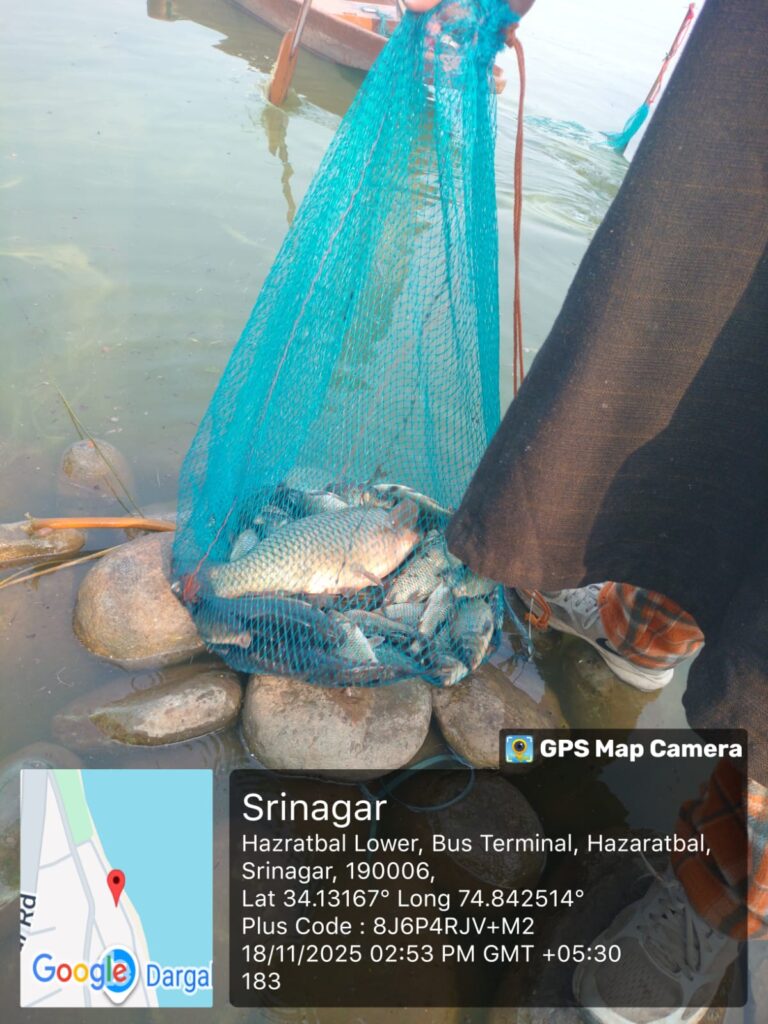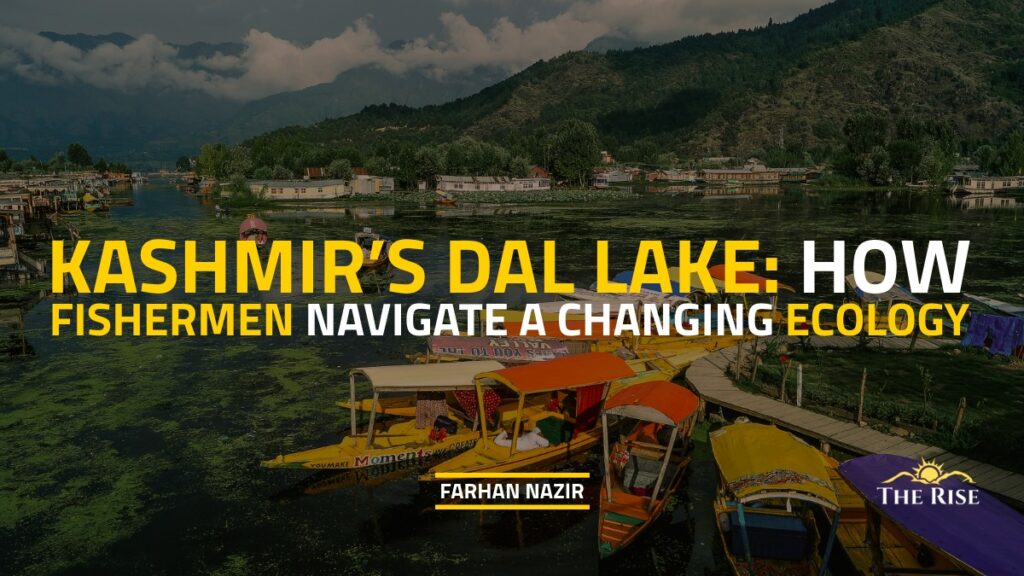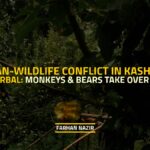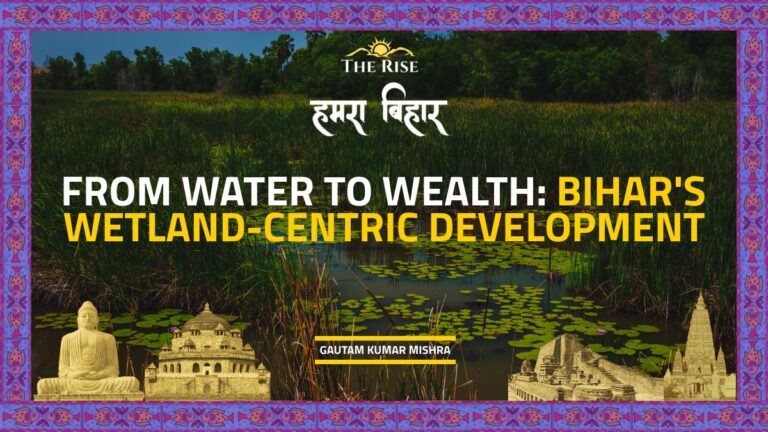With the ecological changes in the lake, the livelihoods of fishermen have also transformed. Their profession remains, their skill remains, their devotion remains, but their days are longer, their searches wider, and their catches lighter.
Dal Lake is more than a postcard of Kashmir—it is a living world of memories, livelihoods, and quiet moments that belong to the people who have loved it for generations. Before the sun rises, fishermen step onto their wooden boats, push it gently into the calm waters, and begin their familiar journey. In the silence of dawn, the lake feels like an old friend—patient, comforting, and full of stories.
“Dal Lake is our heritage. This water raised us like a mother,” said Faiyaz Ahmad, a fisherman who has been working on these waters for more than three decades.

For decades, Dal Lake was rich with fish that defined both food and culture. Indigenous species such as Ale Gad (Schizothorax), Khont, Choppr Gad, and Chattan Gad were once found in abundance. Alongside these native species, swam carp such as Punjabi Gad, Gunnu Gad, and Grass Gad. These fish were introduced into the lake from outside, but over time, they multiplied and became a key source of income for local fishermen. Fishermen learned to read the lake with precision. They knew the seasons when Ale Gad shimmered in the shallows, and the quiet corners where Chattan Gad preferred to hide.
“I learned the signs of this lake before I learned the alphabet,” Faiyaz recalls.
But like any living system, the lake began to change. Ecologists observed shifts in water clarity, oxygen levels, and aquatic plant growth. These shifts are majorly driven by nutrient inflow, soil runoff from the catchment, and daily activities around the lake (Bhat & Pandit, 2014; LAWDA, 2022). These changes are subtle, not alarming, yet deeply felt by those who depend on the lake.

The result has been a decline in fish availability, especially the sensitive indigenous species. Fish still inhabit the lake—Ale Gad, Khont, Choppr Gad, Gunnu Gad, Punjabi Gad, and Grass Gad—but their patterns have changed. They no longer gather in the old familiar places. They move differently. They hide deeper. They respond to seasons with more caution.
“The lake still gives us fish, but not in the old rhythm. Unlike earlier days, the water today feels emptier; it feels as if the fish are shy,” Faiyaz told TheRise.
With these ecological changes, the livelihoods of fishermen have also transformed. Their profession remains, their skill remains, their devotion remains, but their days are longer, their searches wider, and their catches lighter.
Many now combine fishing with small-scale farming on floating gardens. Others row shikaras during tourist months or help in local markets. These are not signs of loss—they are signs of resilience and adaptation, born from love for the lake that raised them.

“The lake has its own seasons of giving,” Faiyaz says softly. “When it changes, we change too. That is how we honour it.”
Restoration and conservation efforts—weed management, upgraded treatment systems, catchment protection, and regular water monitoring—continue to support the lake’s health (LAWDA, 2022).
This is the essence of Dal Lake today. The lake breathes differently now, and the people who love it breathe with it. The bond remains unbroken.
Fishermen continue to rise before dawn, cast their nets with hope, and listen to the quiet wisdom of water. The fish continue to move through the lake’s changing world. The floating gardens continue to bloom. And life continues—gentle, adaptive, devoted.
“As long as the lake breathes, there is hope. And we breathe with it,” says Faiyaz.
Dal Lake shines today with the same softness, the same calm, the same timeless beauty. It may be changing, but it is very much alive—and so is the love of the people who walk this journey with it.
References
- Bhat, S. A., & Pandit, A. K. (2014). Ecological observations on nutrient changes and aquatic life in Dal Lake, Kashmir. International Journal of Lakes and Rivers, 7(1), 1–12.
- Jammu & Kashmir Lakes and Waterways Development Authority. (2022). Environmental monitoring report of Dal and Nigeen Lakes. Srinagar: LAWDA Publications.
- Naqash, N. (2019). Traditional fishing culture and livelihood adaptation in Dal Lake communities. Srinagar Cultural Ecology Review, 5(2), 67–75.
- Raina, R., & Samoon, F. (2018). Study of fish diversity patterns in Dal Lake under changing ecological conditions. Journal of Fisheries and Aquatic Science, 13(2), 45–52.
- Rather, M. A., & Shah, F. A. (2015). Impacts of seasonal water quality shifts on snow trout species in Dal Lake. Journal of Himalayan Ecology, 9(1), 23–31.
Farhan Nazir is an intern with TheRise
Disclaimer: The views expressed in this article are of the author solely. TheRise.co.in neither endorses nor is responsible for them. Reproducing this content without permission is prohibited.
About the author
Farhan Nazir is a passionate wildlife enthusiast and Zoology postgraduate from the Central University of Kashmir. He is deeply committed to the study and conservation of nature. With a growing interest in biodiversity protection and ecological research, Farhan strives to blend scientific knowledge with on-ground action to safeguard fragile ecosystems and aspires to build a meaningful career contributing to wildlife conservation and environmental sustainability.









